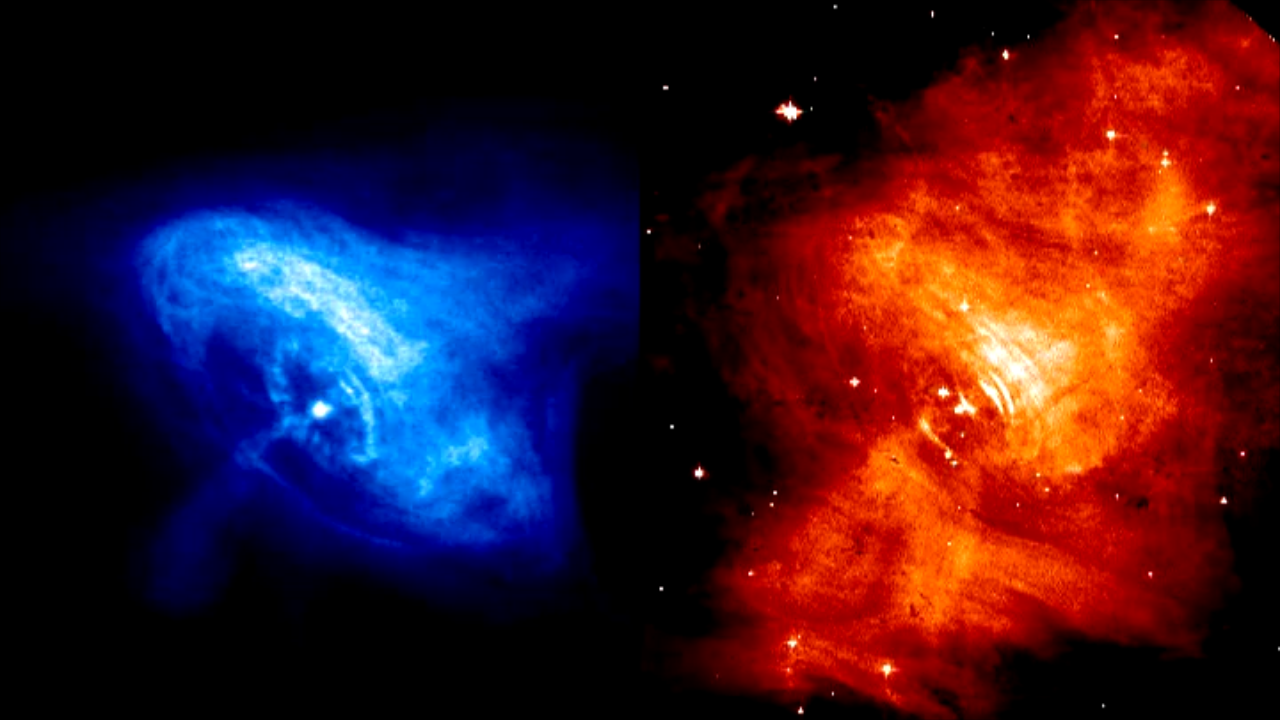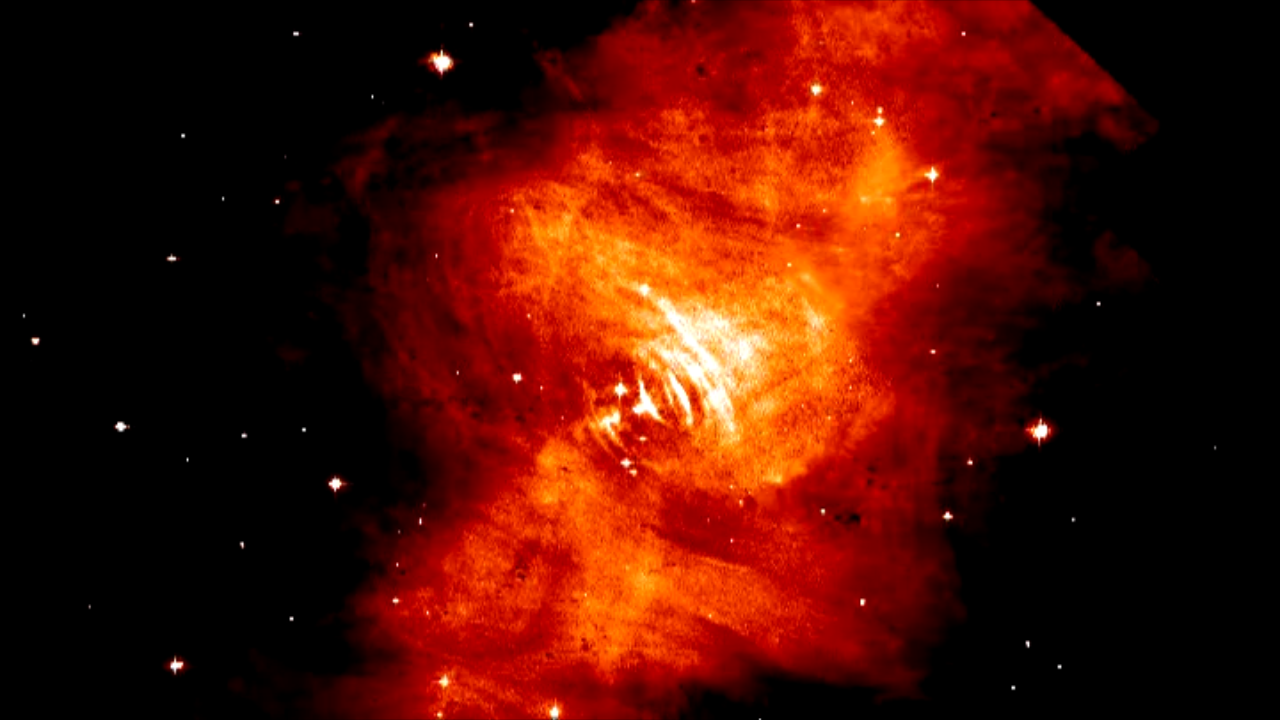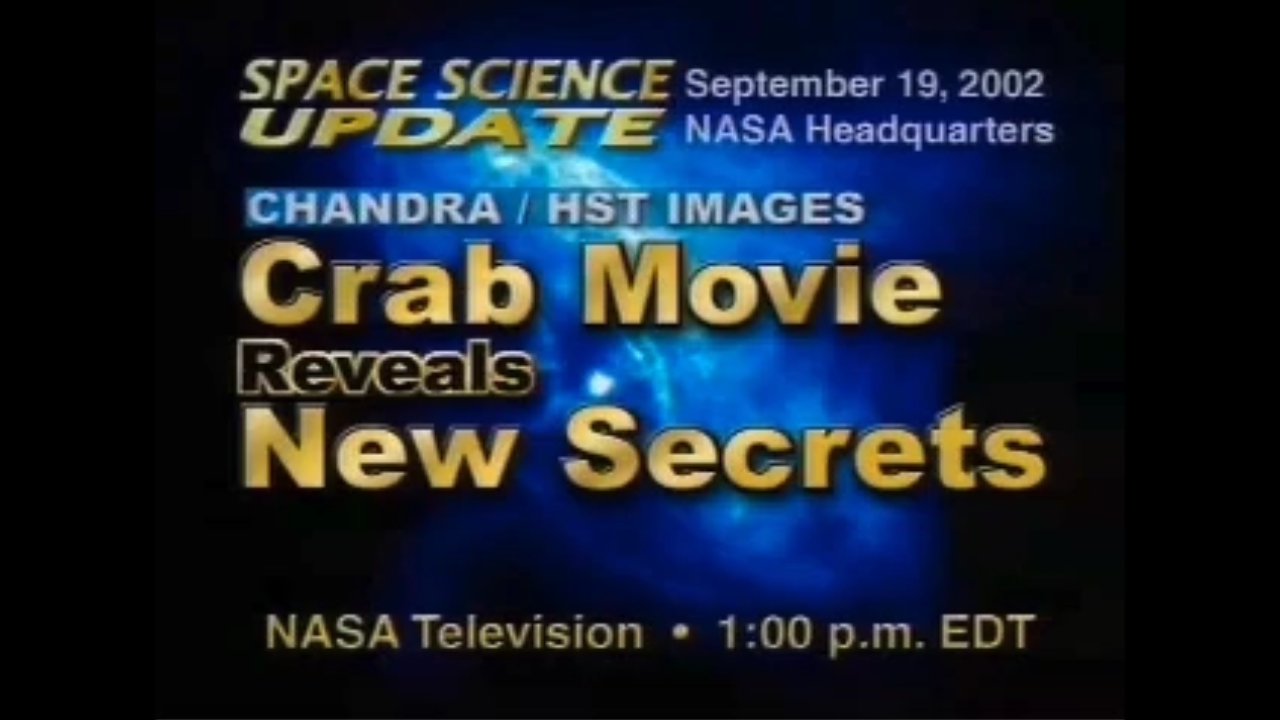1 min read
6 Panel of Chandra and Hubble, Full Field

This comparison between the Chandra (left) and Hubble (right) images of the Crab Nebula shows 3 sets of full field views.
About the Object
- R.A. PositionR.A. PositionRight ascension – analogous to longitude – is one component of an object's position.05h 34m 31.96s
- Dec. PositionDec. PositionDeclination – analogous to latitude – is one component of an object's position.22° 0' 52.09"
- ConstellationConstellationOne of 88 recognized regions of the celestial sphere in which the object appears.Taurus
- DistanceDistanceThe physical distance from Earth to the astronomical object. Distances within our solar system are usually measured in Astronomical Units (AU). Distances between stars are usually measured in light-years. Interstellar distances can also be measured in parsecs.About 6,000 light-years (1,850 parsecs)
About the Data
- Data DescriptionData DescriptionProposal: A description of the observations, their scientific justification, and the links to the data available in the science archive.
Science Team: The astronomers who planned the observations and analyzed the data. "PI" refers to the Principal Investigator.Principal Astronomers: J. Hester and P. Scowen (ASU), C. Michel (Rice U.), J. Graham (UC Berkeley), J. Gallagher (U. of Wisconsin-Madison), A. Watson (UNAM - Morelia), R. Sankrit (JHU) J. Hester (ASU), K. Mori (Penn State U. and Osaka U.), D. Burrows (Penn State Univ.), J. Gallagher (U. of Wisconsin-Madison), J. Graham (UC Berkeley), M. Halverson (U. of Wisconsin-Madison), A. Kader (ASU), F. C. Michel (Rice Univ.) and, P. Scowen (ASU) - InstrumentInstrumentThe science instrument used to produce the data.HST>WFPC2 and CXO>ACIS
- Exposure DatesExposure DatesThe date(s) that the telescope made its observations and the total exposure time.November 26 and January 31, 2000, and April 6, 2001
- FiltersFiltersThe camera filters that were used in the science observations.WFPC2 F547M and ACIS-S
- Object NameObject NameA name or catalog number that astronomers use to identify an astronomical object.Crab Nebula, M1, NGC 1952
- Object DescriptionObject DescriptionThe type of astronomical object.Supernova Remnant
- Release DateSeptember 19, 2002
- Science ReleaseSpace Movie Reveals Shocking Secrets of the Crab Pulsar
- Credit

Color Info
Color InfoA brief description of the methods used to convert telescope data into the color image being presented.
Blue (X-ray): ACIS-S Red (Optical): WFPC2 F547M
Related Images & Videos

Combined X-Ray and Optical Images of the Crab Nebula
A composite image of the Crab Nebula showing the X-ray (blue), and optical (red) images superimposed. The size of the X-ray image is smaller because the higher energy X-ray emitting electrons radiate away their energy more quickly than the lower energy optically emitting...
Share
Details
Last Updated
Aug 17, 2025
Contact
Media
Claire Andreoli
NASA’s Goddard Space Flight Center
Greenbelt, Maryland
claire.andreoli@nasa.gov
































